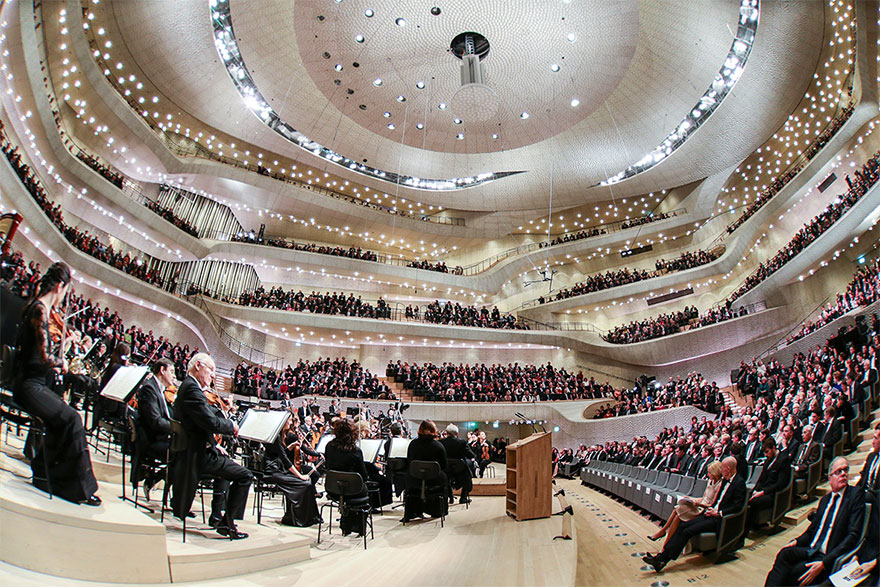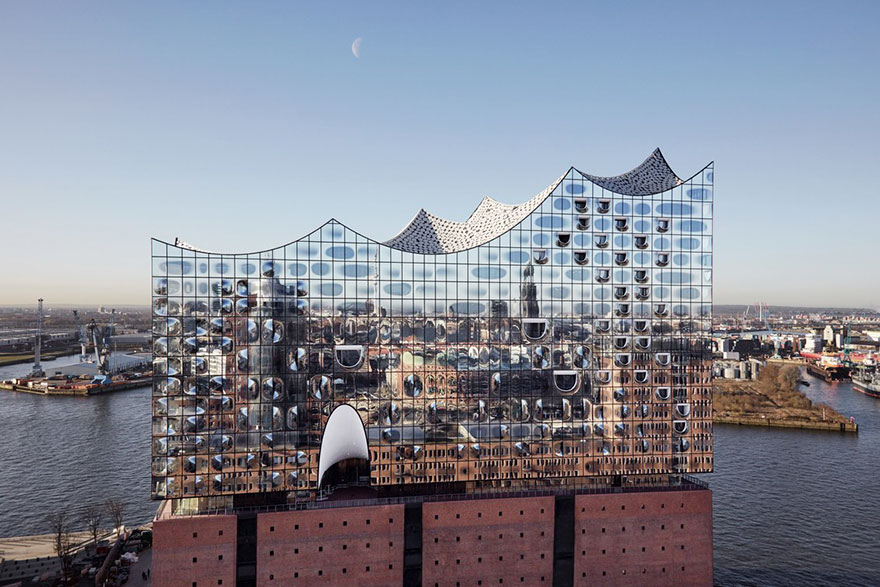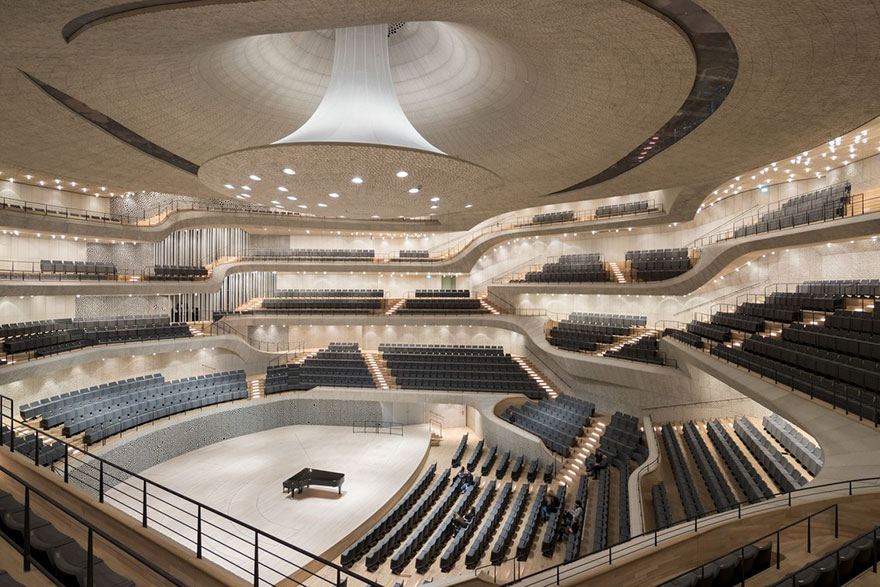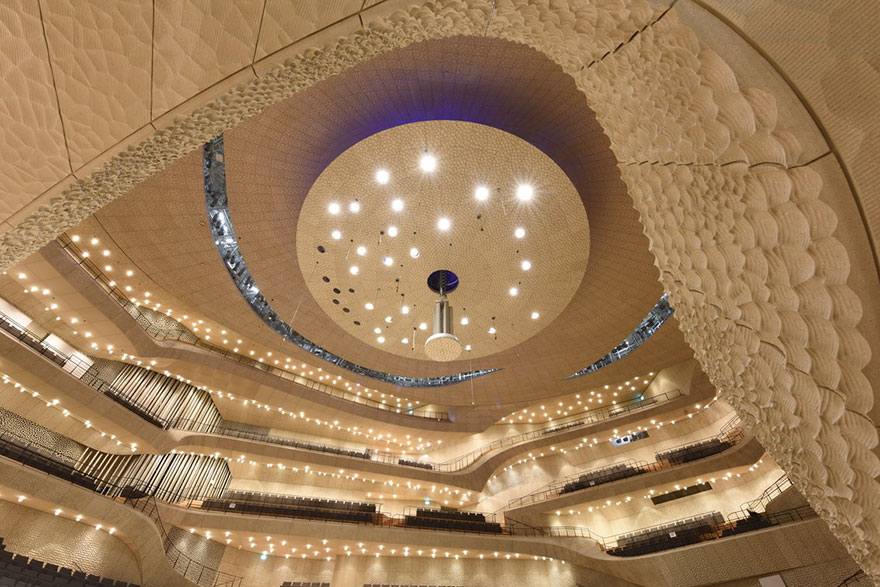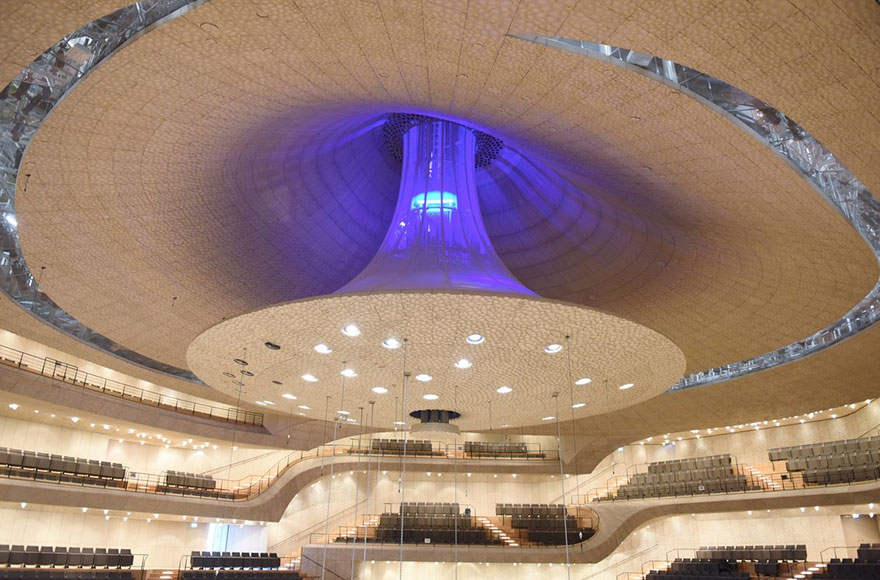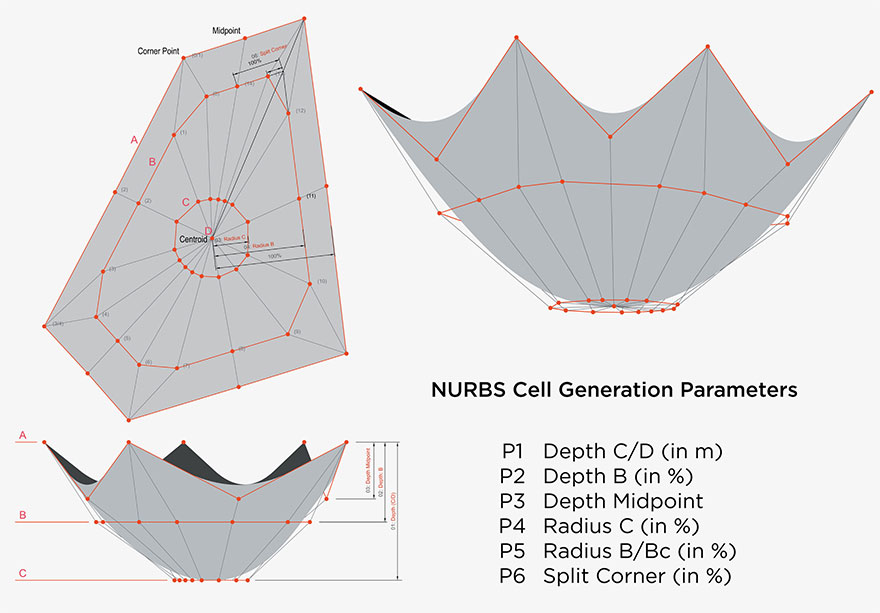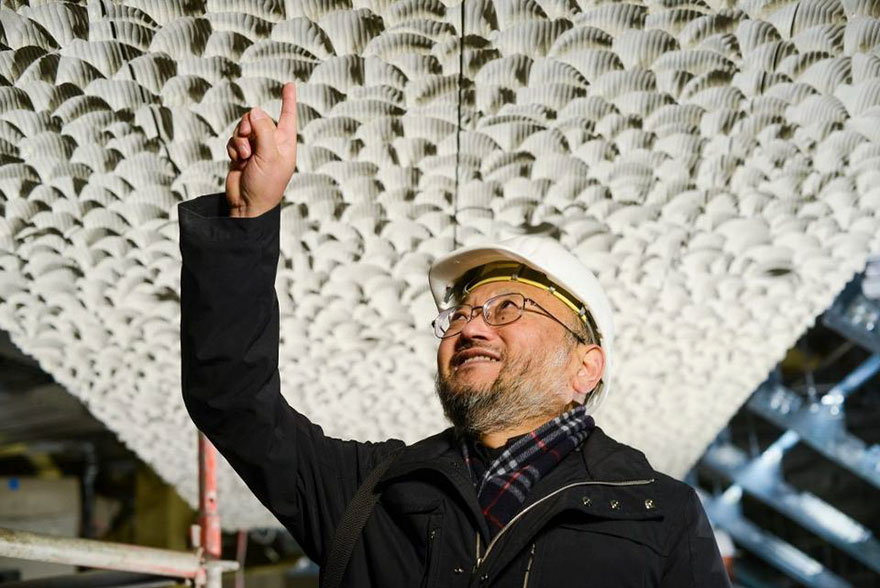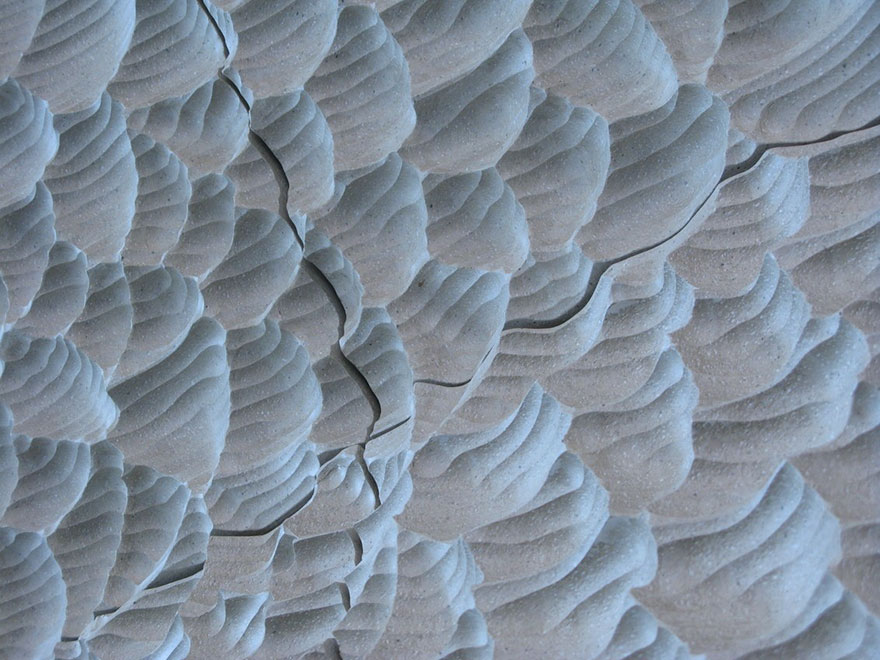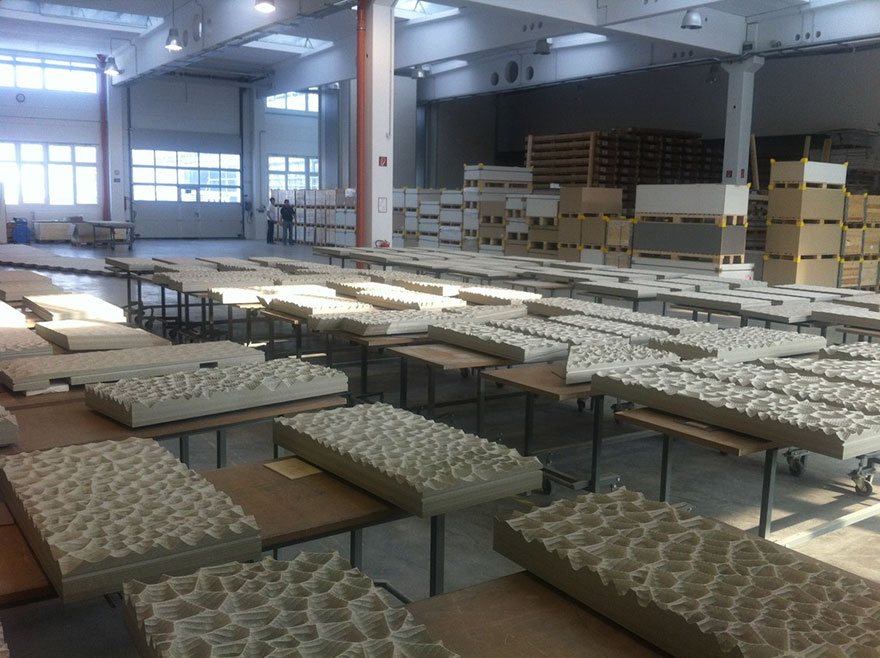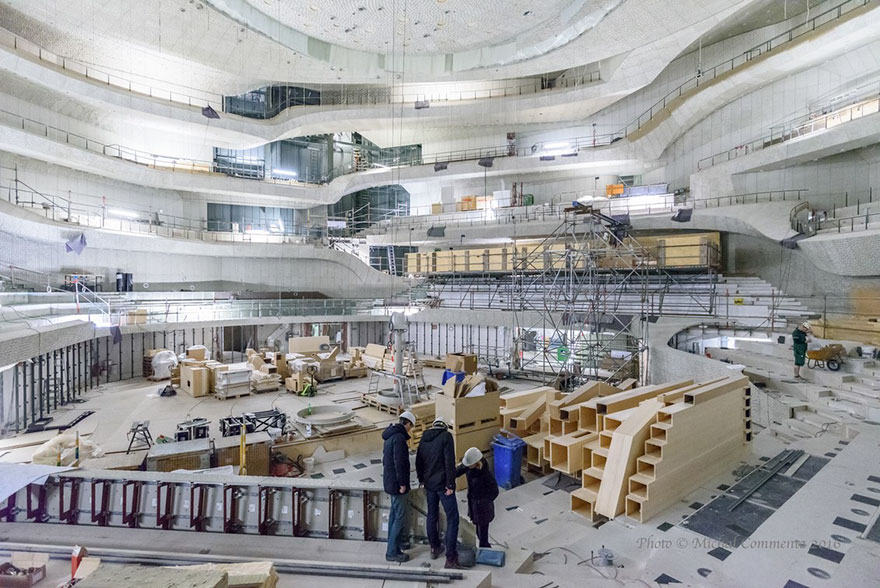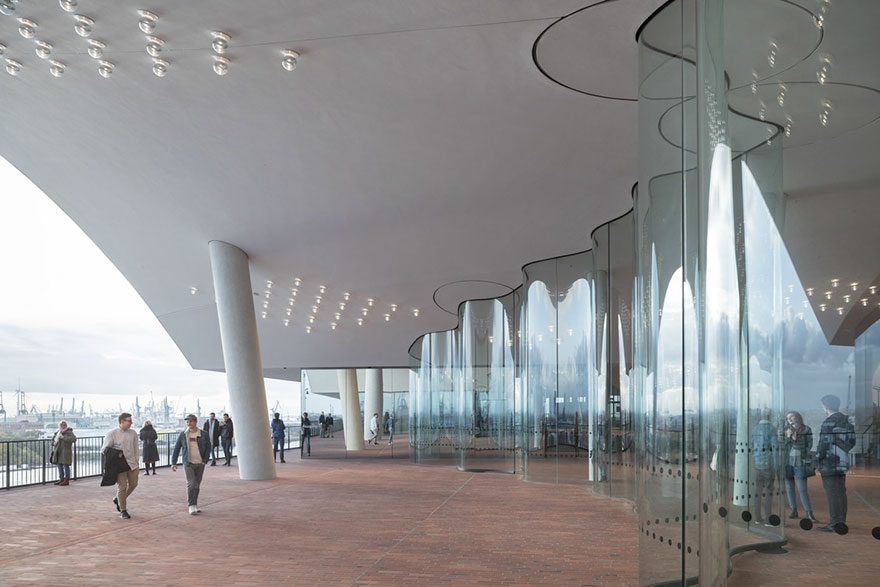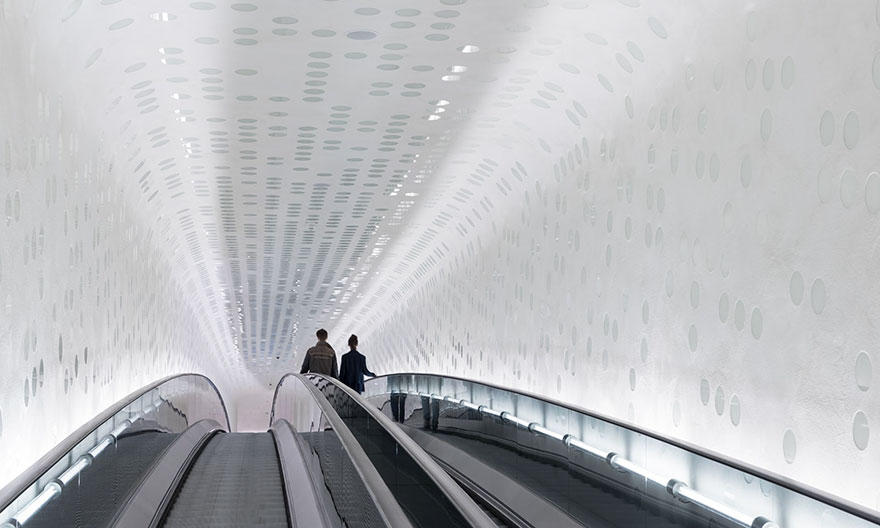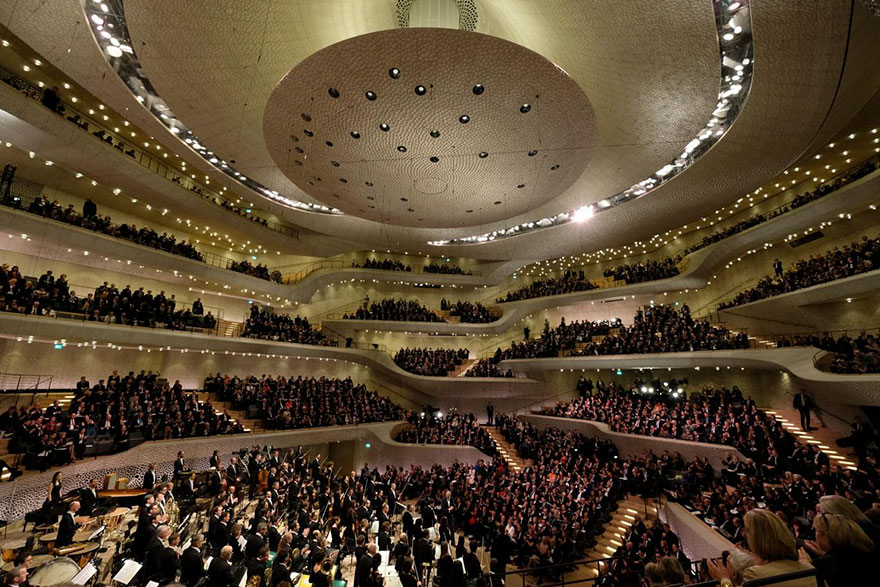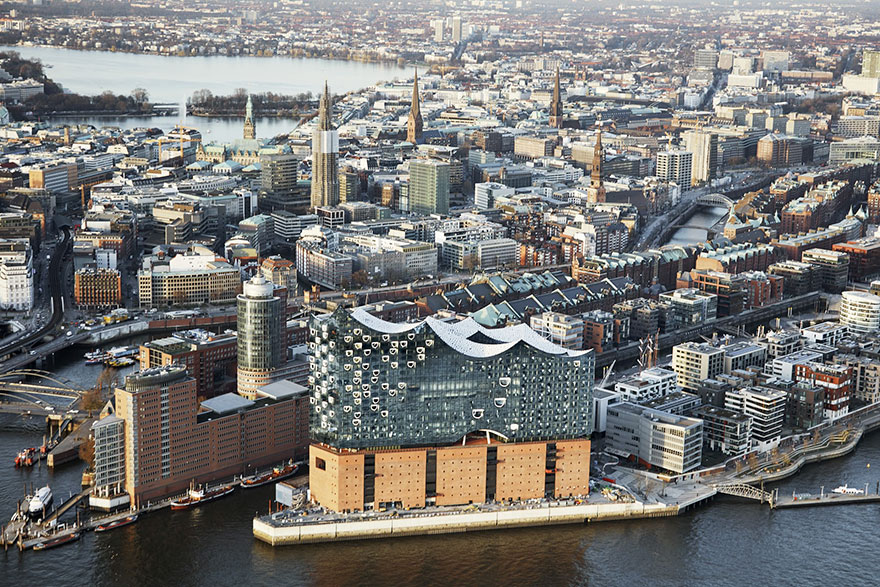Here’s What Happens When People Let Algorithms Design A Concert Hall
It might have taken 7 years longer than planned, and it might have cost ten times more than the original budget, but as you can see from these incredible pictures, Hamburg’s new concert hall was definitely worth the wait.
The hall, called the Elbphilharmonie, can seat 2,100 people and cost a whopping $843 million USD. It was designed by Swiss architects Jacques Herzog and Pierre de Meuron, who are perhaps most well known for designing the Tate Modern in London and the Olympic “Bird’s Nest” Stadium In Beijing. They joined forces with Japanese acoustician Yasuhisa Toyota, famous for the Walt Disney Concert Hall in L.A and the Suntory Hall in Tokyo, and together they used algorithms to create the auditorium’s 10,000 unique acoustic panels.
Made from gypsum fiber, each panel contains one million “cells” which line the ceilings, walls and balustrades of the central auditorium. When sound waves hit these panels, the “cells” help to shape the sound by either absorbing the waves or causing them to reverberate throughout the hall. No two panels absorb or scatter the sound waves in the same way, but together they create a perfectly balanced audio that can be heard from every corner of the auditorium.
The genius feat of audio engineering is complemented by an equally stunning facade, which rises above the Elbe River and is the tallest building in town. Its roof is designed to mimic the shape of waves and is covered in giant sequins, and the building features 1000 plate-glass panels that change color in the light. It’s a beautiful testament to both music and architecture in the city where Brahms and Mendelssohn were born. Can you imagine listening to one of their performances in such an incredible concert hall?
More info: Elbphilharmonie
The Elbphilharmonie is Hamburg’s stunning new concert hall
Image credits: Maxim Schulz
It can seat 2,100 people and cost a whopping $843 million USD
Image credits: Iwan Baan
It took seven years longer than scheduled to complete and far exceeded its original budget of $82 million
Image credits: Michael Zapf
But as you can see, it was definitely worth the wait
Image credits: Fabian Bimmer
It was designed by Swiss architects Jacques Herzog and Pierre de Meuron, who also designed the Tate Modern in London
Image credits: Christian Charisius
They joined forces with Japanese acoustician Yasuhisa Toyota, famous for the Walt Disney Concert Hall in L.A
Image credits: Michael Zapf
Together they used algorithms to create the auditorium’s 10,000 unique acoustic panels
Image credits: One to One
For some designers it’s a scary prospect. “I have 100% control over setting up the algorithm, and then I have no more control,” says architect Benjamin Koren
Image credits: Unknown
Made from gypsum fiber, each panel contains one million “cells” which line the ceilings, walls and balustrades of the central auditorium
Image credits: Bertold Fabricius
When sound hit these panels, the “cells” shape the sound by either absorbing the waves or causing them to reverberate throughout the hall
Image credits: Ben Koren
No two panels absorb or scatter sound waves alike
Image credits: Ben Koren
But together they create a balanced reverberation across the entire auditorium
Image credits: Michael Commentz
The genius design is complemented by an equally stunning facade, which rises above the Elbe River and is the tallest building in town
Image credits: Iwan Baan
It’s a beautiful testament to both music and architecture in the city where Brahms and Mendelssohn were born
Image credits: Iwan Baan
Can you imagine listening to one of their performances in such an incredible concert hall?
Image credits: Michael Zapf
Image credits: Maxim Schulz
